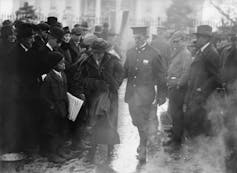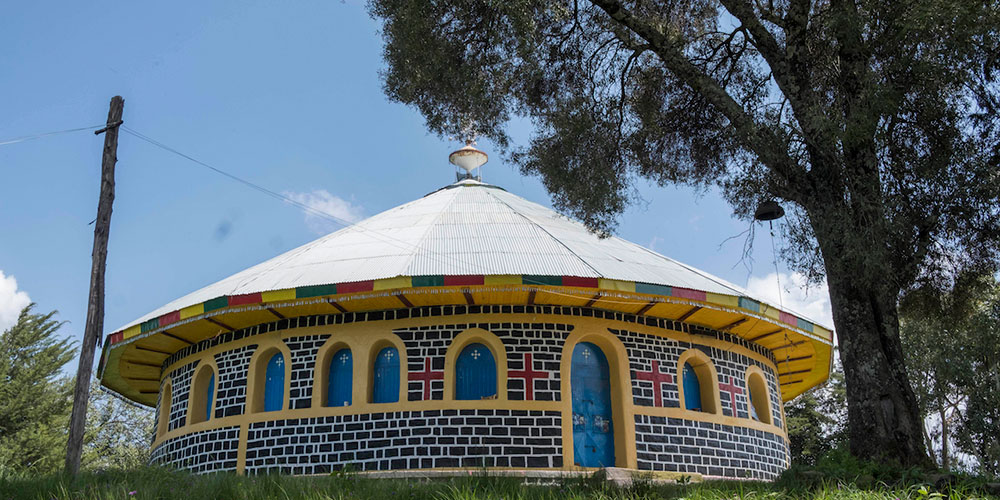
Ethiopians Make Progress Restoring Precious Church Forests
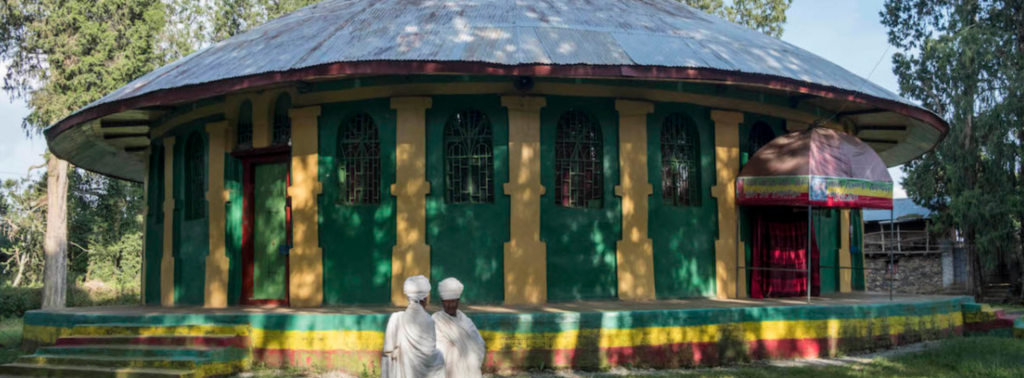
- In Meket – a district in Ethiopia’s Amhara National Regional State (ANRS) – efforts are underway to restore what experts say is one of the more severely deforested and degraded regions in the country.
- Of the land in ANRS, less than 2 percent forested land remains, and efforts are underway to restore degraded and deforested areas.
- In 2016, Ethiopia turned to forestry sector development projects in the form of short rotation planting and rehabilitation of degraded lands in ANRS and other districts.
DEBRETABOR, Ethiopia – At a tree nursery in Ethiopia’s Meket district, young men and women pack small plastic bags with soil. The indigenous and exotic species grown here were previously sown directly into the earth, but the growth efficiency was less than 50 percent, according to Melak Dagnew, a forest development project coordinator in the country’s Meket district.
With the introduction of the plastic bags, into which the seedlings are first planted, and a consistent regimen of post-plantation care — watering, weeding, adding compost — the efficiency rate has risen to 93 percent, Dagnew says, and the trees have grown as much as 5 meters (16 feet) in just a year.
“Soil erosion, land degradation and, as a result, a reduction of productivity were observed widely,” says Dagnew. Meket is one of the four districts in Ethiopia’s Amhara National Regional State (ANRS) where land restoration pilot projects are being carried out.
“The lack of forest products like fuelwood, wood for fencing and housing purposes for the community were observed because of population increase followed by the consumption of natural forests in a short period of time,” he said.
Known for its densely populated highlands and rain-dependent agriculture, the ANRS is one of the more severely deforested and degraded regions in the country. Recent studies show that out of 157,000 square kilometers (60,600 square miles) of land, less than 2 percent is covered by forest.
An analysis of forest coverage by Ethiopia’s Ministry of Environment, Forestry and Climate Change found that nearly 12,000 square kilometers (4,600 square miles) of forest — an area half the size of the island of Sicily — was lost between 2000 and 2013.
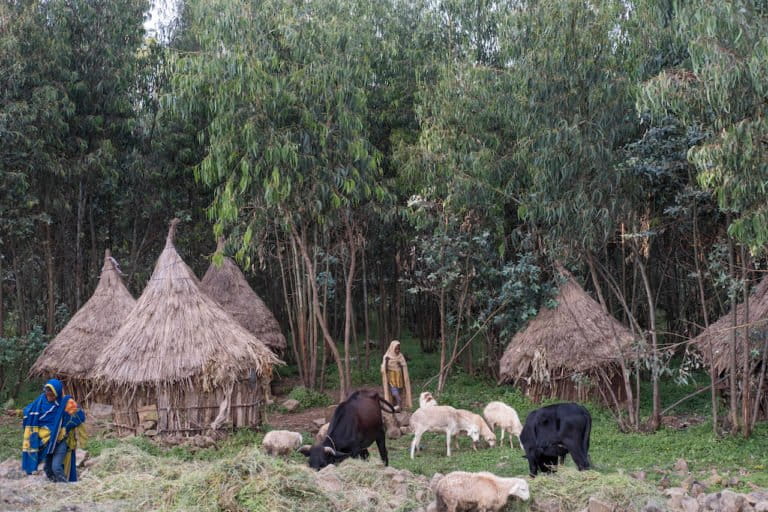
Only 2,460 square kilometers (950 square miles) of forest cover was gained, making the forest sector one of the top contributors to domestic greenhouse gas emissions. By pledging to restore 150,000 square kilometers (58,000 square miles) of its degraded and deforested land by 2025, an area half the size of Arizona, Ethiopia has joined the global movement toward forest landscape restoration, or FLR.
Just over a fifth of that figure, or 34,000 square kilometers (13,100 square miles), has recently been identified as suitable for reforestation.
Native vs. non-native trees
The landscape in Meket district is rugged and highly degraded, and ranges in altitude from 1,200 to 3,000 meters (3,900 to 9,800 feet). Since 2016, it’s been among the districts where forestry sector development projects have been implemented in the form of short rotation planting and rehabilitation of degraded lands.
The species planted here include the naturally occurring African juniper (Juniperus procera), wild olive (Olea africana) and flat top acacia (Acacia abyssinica). Non-native varieties include Tasmanian bluegum (Eucalyptus globulus), river red gum (Eucalyptus camaldulensis) and Mexican cypress (Cupressus lusitanica).
Of the indigenous seedlings that are planted, 35 percent are fast-growing species and 30 percent are slow-growth varieties. Despite the considerable effort being invested to promote native plants, farmers who need fuelwood for income and for construction purposes favor non-native plants like eucalyptus, which reach maturity for cutting quickly and can grow back up to four times faster than some native species after the initial cut.

But this expediency comes at a cost. Eucalyptus trees are known to affect soil conditions, groundwater and the overall biological diversity of the areas in which they occur. Yet despite this, studies show that 90 percent of plantations in Ethiopia are covered by these species, favored for their fast-growing nature, rotation periods and market demand.
Tree selection isn’t the only challenge facing the reforestation effort. Other factors identified by researchers earlier this year include weed infestations and the spread of grazing and farmland. Shallow soil depths and scarcity of moisture in Meket district have also been obstacles.
On the other hand, the reforestation projects have hindered the free movement of area locals and their livestock herds.
In total, 165 square kilometers (64 square miles) from four restoration sites and 12 square kilometers (4.6 square miles) from half a dozen plantation sites have been undertaken in the last two to three years in Meket district alone. After the progress here and in other forestry sector development projects, the scope has grown. An initial slate of nine projects has expanded to 54 nationwide. The Amhara region remains at the forefront, with 24 reforestation projects.
A way forward
Mainly dependent on agriculture, Ethiopia’s economy is highly vulnerable to the impacts of climate change. Already it has suffered from recurring droughts and food security woes. The government has taken several steps toward combating these impacts, including the launch of the Climate Resilient Green Economy (CRGE) policy in 2011, aimed at building a zero-net-emissions economy by 2030 while maintaining the high growth rate needed to attain middle-income status by 2025.
This October, the Ministry of Environment, Forestry and Climate Change launched a 10-year road map for the forest sector, in collaboration with several nongovernmental partner institutions.

Tefera Mengistu, a coordinator for the ministry’s Forest Sector Development Program, said five pillars were included in the road map: enabling environment; sustainable forest production and value chain; forest and rural livelihood; forest and environmental functions; and forest and urban greening. Unlike REDD+, which focuses mainly on reducing emissions from degradation and deforestation, the road map is concerned about the forest sector in general.
Land restoration and improvement of biodiversity get due emphasis under the pillar of forest and environmental functions, aimed at meeting the country’s commitment for the restoration of 150,000 square kilometers of land.
An alternative hope for farmers
Just outside the plant nursery, Asrat Haile, 61, weeds his farm where he hopes in a few months to start harvesting teff, the food grain used to make injera, Ethiopia’s national dish. To supplement his income, Haile also works as a security guard for one of the restoration sites in Meket district. Since it’s a rural area, it’s common for people to take a side job to gain more income.
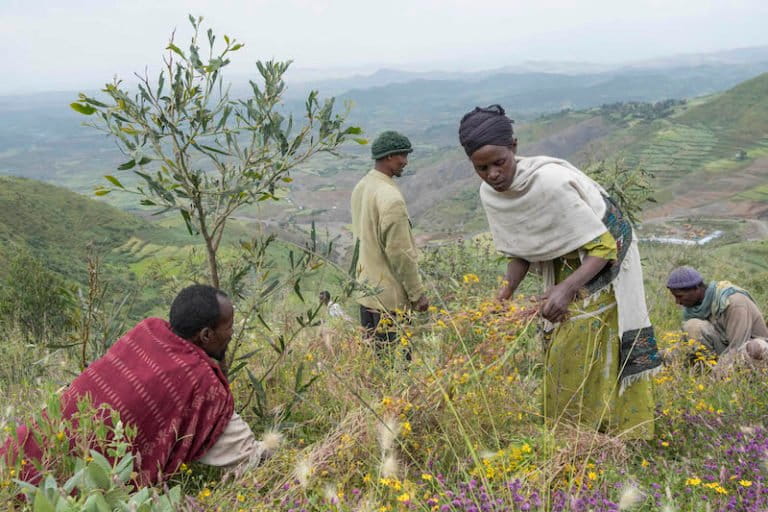
“All this terrain had no tree coverage and was severely degraded. But it’s coming back to life now that the project started.” Haile says, recalling the floods that followed during the rainy season because of the eroded soil and the severely degraded mountainous landscape. “I no longer see the water coming down.”
He and other farmers who make up to 61 percent of the earned income in the district are excited that the project includes many people living in poverty and creates employment opportunities. They plant the seedlings grown in the nurseries, both native and non-native trees. As the trees take root in their woodlots, they serve both as a source of fuelwood and timber, and as shade to rest under. Thousands of young men and women are now employed at sites for pitting, planting, watering and other post-plantation management.
In an effort to reduce wood cutting for fuel and construction purposes, the project has distributed hundreds of fuel-saving stoves and solar lights to households that have demonstrated the best performance throughout the project activities. The project also allows livestock farmers to enter areas secured for restoration to collect grass and shrubs for fodder during the January-May dry season.
There are other benefits.
On a nearby hill covered with bright yellow indigenous flowers locally known as adey abebaBidens macroptera), trained farmers gather at a beekeeping site that’s part of the reforestation project. They are able to produce up to 10 kilograms (22 pounds) of honey each year from a single hive.
“People were skeptical of the project at first,” says Dagnew, the project coordinator. “Drought and intensive grazing were identified to be major problems.” It took numerous discussions with the community before a mutual understanding was reached and the local people started to accept the projects.
They represent not just an economic advantage for the farmers, surrounded by harsh terrain, but also protection for the land against erosion and flooding. That also improves crop yield and productivity along the way.
The role of the church
The Ethiopian Orthodox Tewahedo Church has more than 40 million followers and over 35,000 churches all over the country, known for the old forests that envelop them. Even as the rest of the country consistently lost forest coverages over decades, it is in the vicinity of these churches where more than 200 of its last surviving indigenous tree species and remaining biodiversity are found.
Alemayheu Wassie, a leading researcher on the topic of church forests, was born and raised in the Amhara region’s South Gondar zone, where there are more than 1,400 church forests. He began his research in 2002 and has since then published more than 20 scientific papers focusing on the conservation and restoration of church forests. Five years ago, he led a project to build walls around or mark for protection 15 church forests carefully selected based on their high biodiversity and indigenous species.
One of these churches stands atop a hill in South Gondar. Known as Debresena it was established in the first half of the 16th century. The church forest contains 34 different tree species on just 11.5 hectares (28 acres) of land. But until a recent demarcation measure undertaken by Wassie and his team, it had been under severe pressure from intensive livestock grazing. This was followed by the planting of eucalyptus trees to replace the dominant indigenous trees such as hachitu (Dicrocephala integrifolia) and maget (Trifolium sp.).
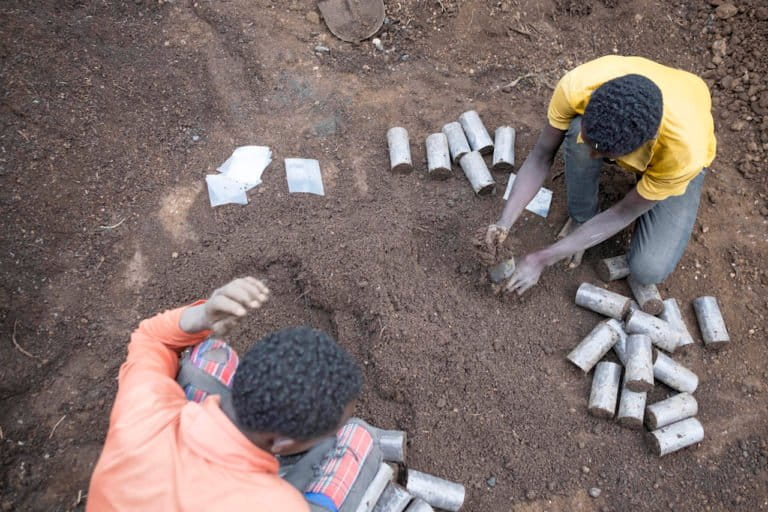
“Upon consultation with the community, we found the construction of stone walls on the perimeter of the church to be the easiest way of protecting the forest,” Wassie says. Stone walls are preferred because materials are easily available, there is potential for plants to grow in between the stones, and they are tough for cattle to push down. Whenever stone is unavailable for building walls, an artificial demarcation between the roads and farmlands and the church forest is used.
Once the area closure or demarcation is done, the local people are reluctant to encroach. As a result, a visible difference in terms of both quality and forest coverage area has developed. The difference is especially stark when compared to other church forests in the area where demarcation measures were not taken.
Forests have long been an important companion of the churches. They signify the dignity and prestige of the church and provide a tranquil atmosphere for the hermits and monks who live and contemplate in them. Many churches are built on hills, and the forest surrounding them helps to prevent wind and floods. Additionally, in early Ethiopian and church history, inks made from roots, leaves and flowers of various plants were used to draw paintings and produce books.
Changing times
According to Wassie, intensive livestock grazing and the increased need of farmers for more land to plow are the two major factors endangering the church forests of Ethiopia. The former hampers the regeneration of seeds by leaving no room for new trees to replace older ones, while the latter significantly reduces the forest coverage area.
With his persistent efforts and funding from the Florida-based Tree Foundation, Wassie was able to enclose more than a dozen churches in South Gondar. However, he says he’s concerned that, despite his repeated appeals, both church and government administrations won’t pay heed to the conservation and restoration work needed for church forests.
But there are also churches that are focused mainly on rotation plantation and self-sustainability, in addition to conserving what’s already there. Tsegur Michael Church is one of the many found in South Gondar that was established hundreds of years ago.
Melakesahel Kindu Kassahun, 52, is head of the church and the person in charge of overseeing all the decisions regarding the forest at Tsegur Michael. He says that 20 years ago the church asked the community for the surrounding land. The local people agreed, even though they grazed their cattle on the land.

Since then, the church has busied itself with planting eucalyptus for sale. The income generated from these trees pays for the salaries of the clergy and the purchase of items for the church, thus making the church self-sustaining and productive.
In addition to eucalyptus, they also plant trees Mexican cypress and grevillea that have a longer life cycle. The difference is that the trees for sale are planted outside the main compound of the church, because no cutting is permitted inside.
“It was first fenced to provide protection for the graveyard,” Kassahun says. Today, the fence that was meant to protect the dead has given life to the forest within.
Once a year after the completion of the Sunday mass service, an announcement is made for the farmers, reminding them to participate on terrace work at the plantation site, starting with the sections that are prone to erosion. This is followed by planting trees.
Unlike the conservation projects initiated by government policies and various nonprofit organizations in many parts of the country, the work that goes on at many of these church forests are initiated by the church and the community itself.
“[Church] forests are stepping stones and boot disks for the land restoration work that’s currently happening in different parts of the country.” Wassie says. “They will be the starting point if we wish to restore our previous natural forest.”
This article was originally published on Mongabay.


